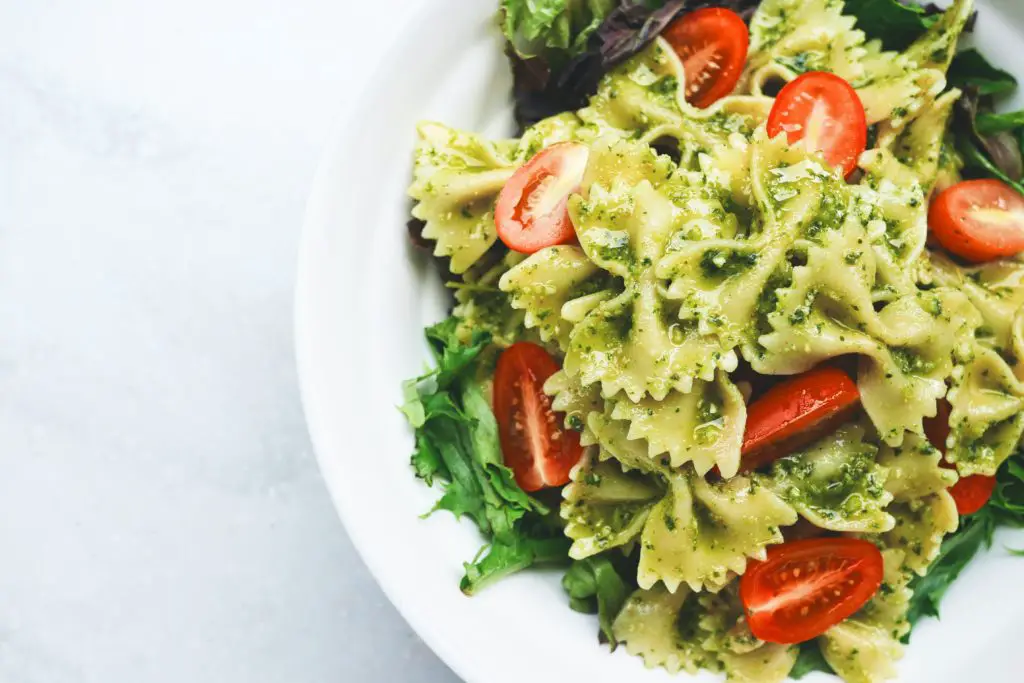Italian dishes are always bold, light, satisfying, made with delicious flavors, and contain high-quality ingredients. It is always an exciting adventure to consume Italian dishes as it creates a very interesting and memorable eating experience.

Italian dishes are mainly wheat-based products paired with meat, fish, cheese, and fresh vegetables. The dishes are handled with care to retain the natural flavor and the quality of the ingredients used in preparing them.
What Ingredients Will You Find in An Italian Kitchen?
The preparation of typical Italian dishes is kept simple, and there is a wide variety of dishes, ingredients, and flavors to make the cooking experience adventurous. Here are some of the ingredients you’ll most likely find in a typical Italian kitchen:
- Pasta: this is a staple food made from wheat flour, water, and sometimes eggs. It is the most commonly identified Italian food all over the world. There are many types of pasta with different shapes, sizes, colors, and flavors available in many stores today. In Italy, pasta can be boiled and served plain with various kinds of sauce, it could be cooked in meat or vegetable broth and served hot, especially at dinner time, it could be oven-baked, and could also be served cold on hot days. Pasta is the most consumed meal in Italy and is considered a whole meal.
- Virgin Olive Oil: this has always been a significant ingredient of Italian cooking history. Italians use olive oil to prepare healthy, rich, and tasty meals. Extra virgin olive oil adds peppery garnish to dishes, and it also serves as a dip for Italian bread.
- Red And White Wine: this is another aspect of Italian cooking and eating culture. Back in Italy’s countryside, many households have at least a small piece of land occupied by vines, enough to produce a reasonable quantity of table wine that could last an entire year. These wines taste even better as they age. Different stores and supermarkets also have good wine at more affordable costs. A dash of red or white wine in Italian dishes makes a world of difference to each meal.
- Balsamic Vinegar: this is a dark ancient kind of vinegar produced in Italy. It is for marinating dishes.
- Fresh tomatoes: this vegetable was introduced to the Italians in the 16th century and is now indispensable in Italian dishes.
- Italian Cheese: Italians shave or grate hard cheese like Parmigiano-Reggiano over salad and pasta and melt softer cheese like mozzarella over their dishes like pizza and lasagna.
- Basil: Basil is the most common Italian cooking herb. It adds a pleasant, minty, and smokey taste to dishes. It is the main ingredient in pesto sauce and adds a unique flavor to salads and tomato sauce for a better outcome.
- Garlic: Garlic is a popular ingredient in Italian dishes. They are sauteed in olive oil to create a cooking base full of a pleasant flavor.
How are Italian dishes served?
Italian dishes are split into different courses, and although not all meals are made up of these courses when Italians go out with their families for a long lunch, they utilize the opportunity to enjoy the complete course meal. Here is the breakdown of an Italian full-course meal:
- Aperitivo: this is the appetizer course. It marks the beginning of the Italian eating adventure. It could be a small dose of liqueur, bubbly beverage, wine, or champagne enjoyed before a meal. It could also be small dishes of cheese, nuts, or olives, just something small to warm up the mouth while waiting for the starter meal.
- Antipasto: this one is the starter meal, usually a bit heavier than the aperitivo. Maybe a platter of vegetables and meat served with cheese and bread; it could also be cold bruschetta or tuna antipasto.
- Primo: Primo is the first-course meal. It is heavier than the starter meal and is served hot. It does not include any meat but may contain seafood or truffle. Primo dishes include pasta, broth, gnocchi, soup risotto, or lasagna.
- Secondo: this is considered the main course meal by Italians. There is all manner of meat and seafood in this course, including chicken, turkey, pork, beef, or lamb, all prepared in different ways. The meat may be roasted or grilled.
- Contorno: this comes with the main course meal, usually a platter of vegetables depicting goodness.
- Dolce: this is the desert, also called a sweet. Dolce completes a traditional Italian dish and must be served with strong, neat, warm espresso coffee.
- Digestive: to conclude an Italian feeding adventure, a digestive alcoholic liqueur-like grappa, limoncello, or amaro is served to wash down all the food that had just been consumed.
Conclusion
Italian dishes are very popular in the world, and although cultural differences and the influence of different nationals seem to have impacted Italian culture, Italians still find a way to exhibit their rich culture and tradition through their dishes.
Frequently Asked Questions
- Are onions used in preparing Italian dishes?
Answer: yes. onions are used to prepare almost all Italian dishes.
- Are there rules for eating Italian dishes?
Answer: yes. Italians tend to have the strictest eating rules in the world.


